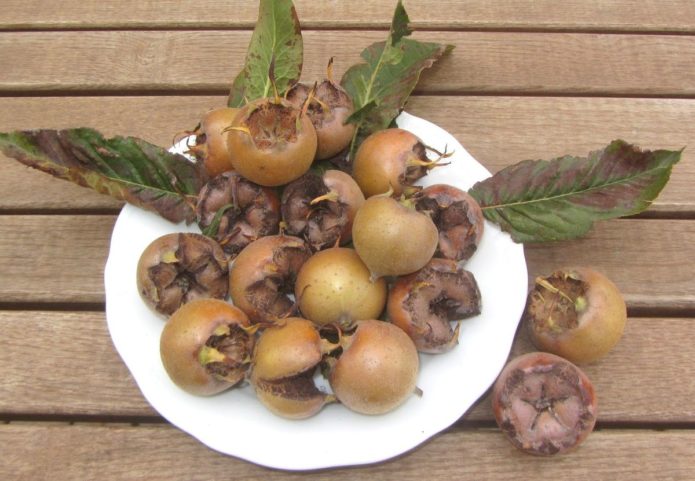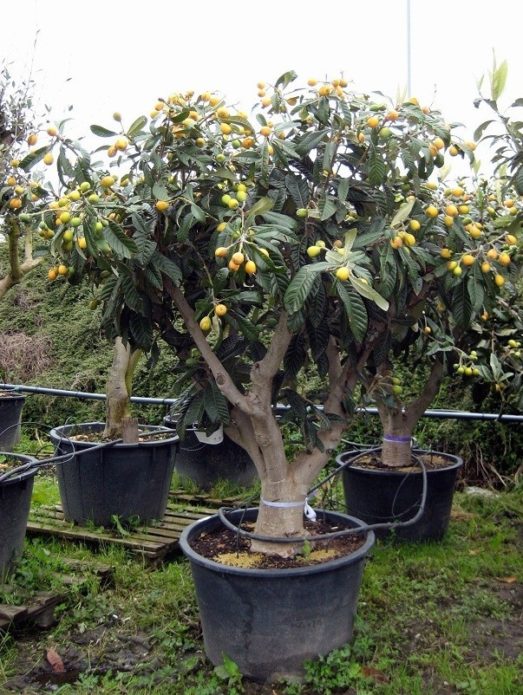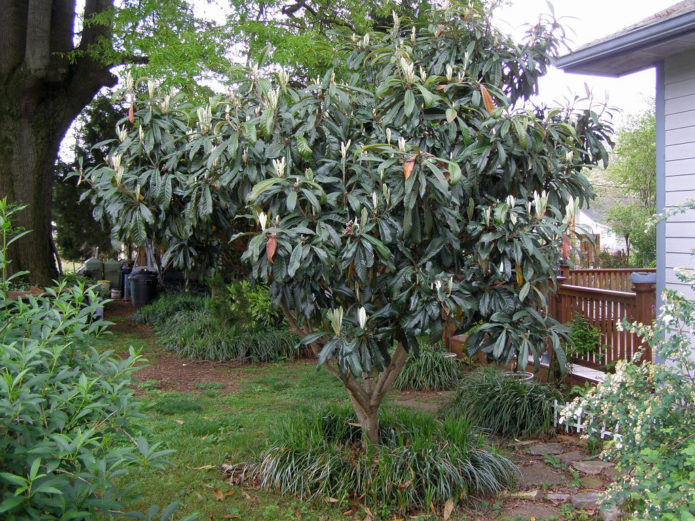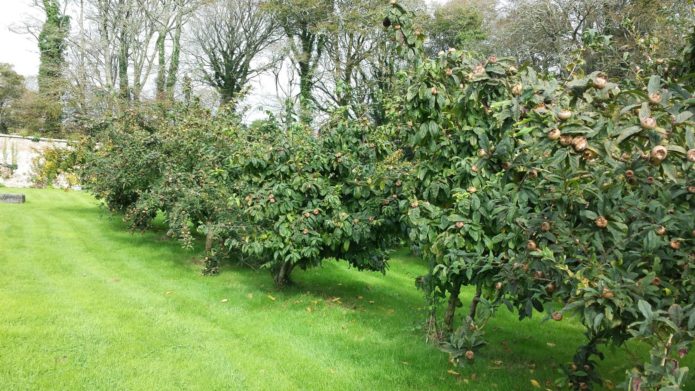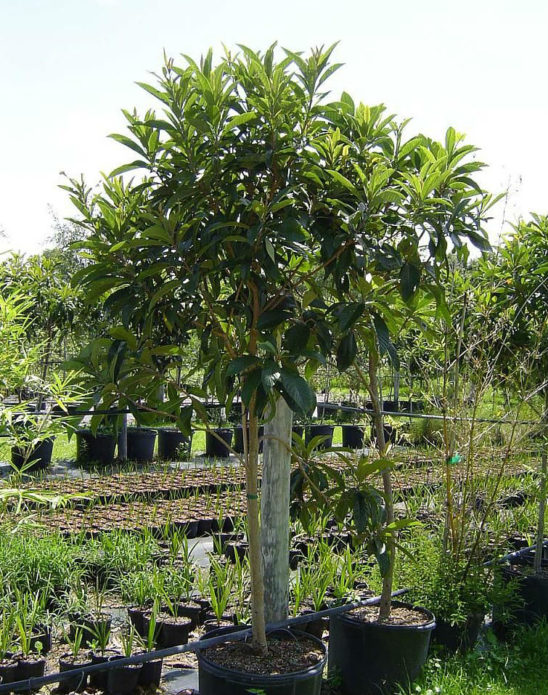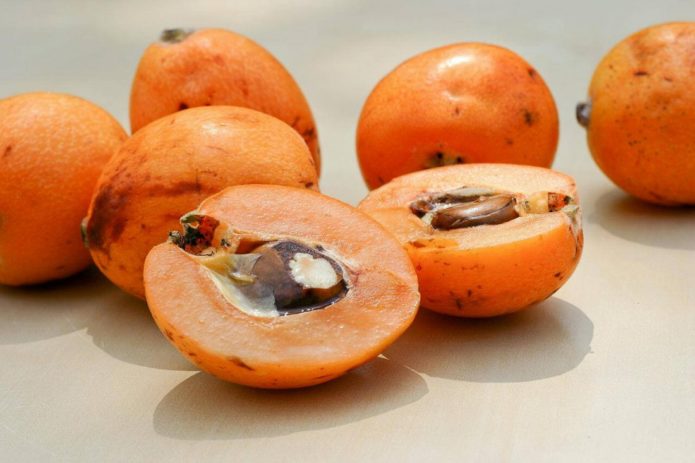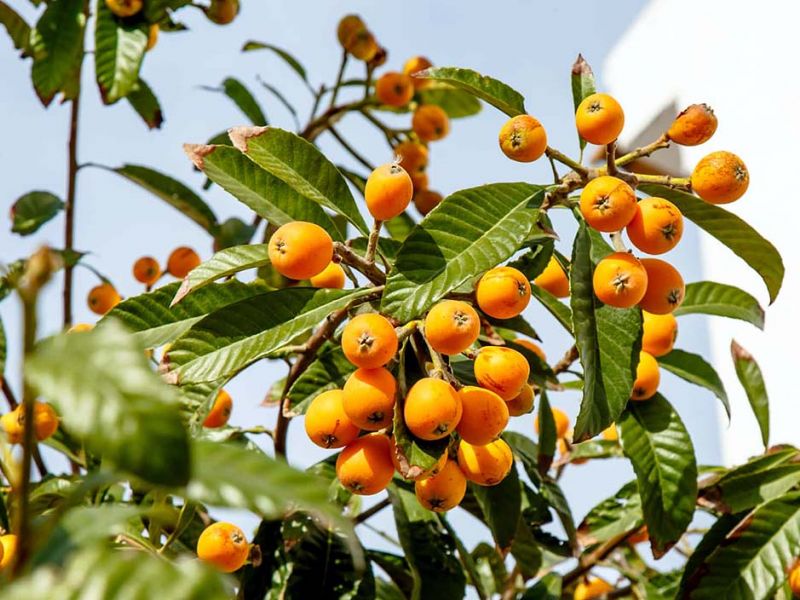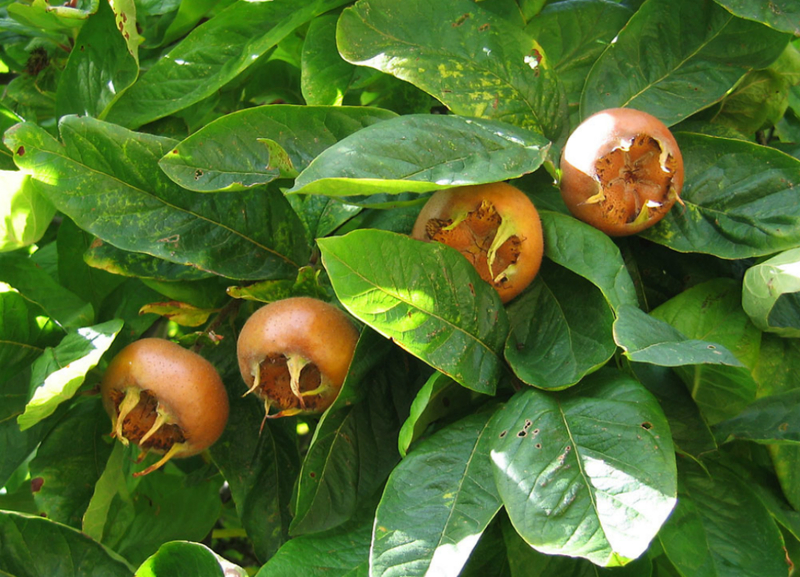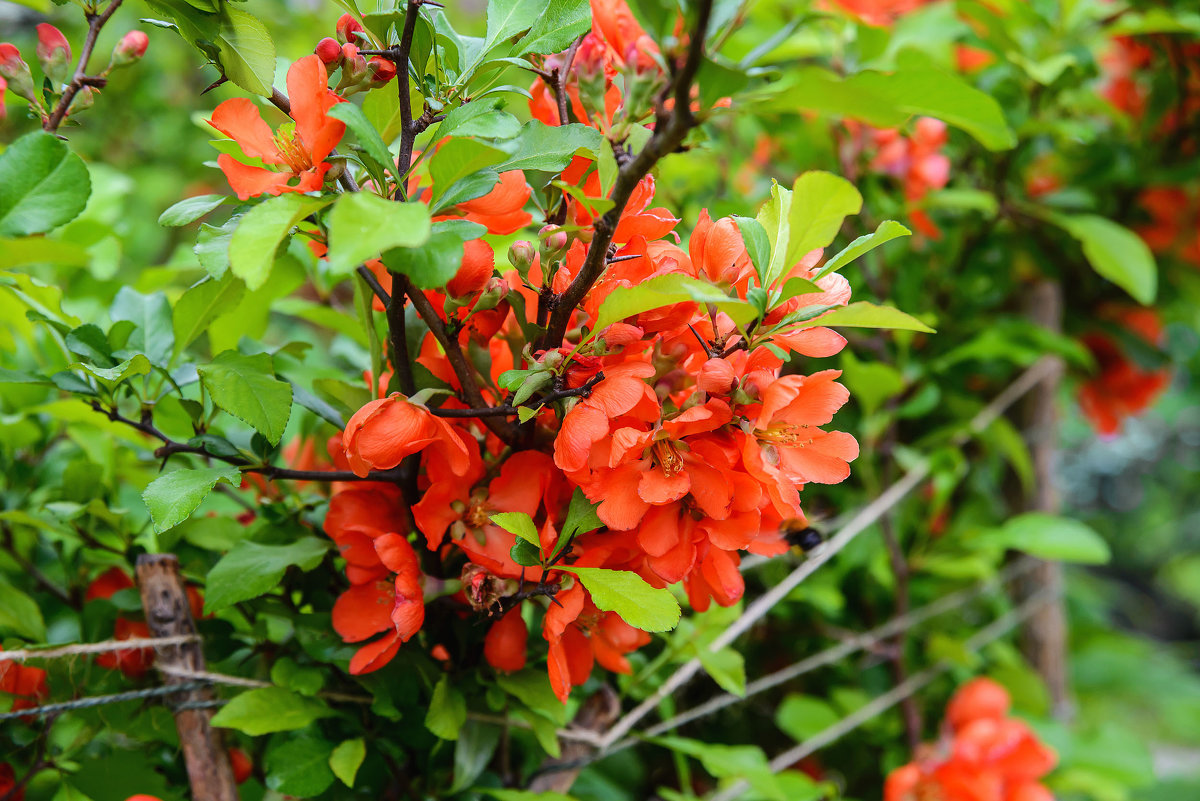Japanese medlar is a subtropical plant. The homeland of this small evergreen tree is Southeast Asia, but it can often be found on the territory of the Russian Federation, in regions with a warm climate: in the Caucasus, in the Crimea, in Sochi, in Yalta. Delicious jams and compotes are made from medlar, and a filling for sweets is made from it. Also, this plant is often used in landscape design to decorate space.
Content
What is the difference between Japanese medlar, loqua and shesek?
Japanese medlar, lokva and shesek are different names for the same plant. There is one more thing - eriobotria (lat.Eriobotrya japonica).
Why is it called so intricately? The word "medlar" of Greek origin is literally translated as "a lump, a bunch of wool." This is how both the plant and the fruit that it gives are called in those parts.
Differences between Japanese and German
The Japanese medlar should not be confused with the German medlar: they have nothing in common. Except, perhaps, the fact that both of these trees belong to pome fruit crops.
The Japanese medlar does not tolerate frost. Its leaves are large, 25–30 cm long. The fruits have a sweet and sour taste, resembling an apricot in appearance.
German or Caucasian medlar it has increased frost resistance, therefore it is not so demanding on the climate. The leaves are elongated, not pubescent. Fruits are round, dark brown in color, taste like an apple.
First-person view of the fruit: video
Features of growing fruit in our climate
Medlar loves warmth and light. If you choose the right place for placing the tubs with the plant, there is a chance to get a good harvest. When it comes to planting in open ground, a number of conditions must be met to achieve the best result.
Lankaran acacia amazes with its unique silky inflorescences, exuding honey aroma. By its beauty during flowering, it can only be compared with sakura:https://flowers.desigusxpro.com/en/sadovye-rasteniya/lenkoranskaya-akaciya-albitsiya.html
Useful properties, indications and contraindications
Due to its chemical composition, medlar has a number of medicinal properties. It contains the following useful substances:
- vitamins A and group B;
- beta carotene;
- vitamin C;
- sodium;
- magnesium;
- calcium;
- potassium;
- phosphorus;
- zinc;
- iron;
- copper;
- manganese.
Due to its high potassium content, lokva has a strong diuretic effect, removes excess water from the body, helping to improve heart function and removing puffiness. Doctors recommend eating medlar fruits for hypertension, arrhythmias, heart failure, dropsy. They contain a large amount of pectin, so excellent marmalade and jelly are obtained from medlar.Lokva is an excellent remedy for strengthening immunity, eliminating inflammatory processes in the respiratory system, and lowering sugar levels in diabetes.
For diseases of the gastrointestinal tract, it is recommended to drink a decoction of unripe medlar - an excellent astringent. Also, lokva helps to normalize metabolism.
There are, however, contraindications. With exacerbations of gastrointestinal diseases - ulcers, gastritis, colitis - it is not recommended to eat the fruits of lokva.
Caution should be given to children with medlar: the likelihood of an allergic reaction is high. Have the child try a small piece of the fruit first to gauge the response of the immature organism.
When breastfeeding, it is not recommended to eat loqua: it can cause diathesis in the baby.
Decorate your garden: a lush, delicate, sweet aroma flower cap, whose name is Robinia:https://flowers.desigusxpro.com/en/sadovye-rasteniya/rozovaya-akaciya-foto.html
How they are used in landscape design: examples in the photo
The decorative properties of medlar are highly valued in landscape design - primarily because throughout the season the plant changes its appearance: in the spring, the round crown forms a green sphere, which is decorated with white or pink flowers during the flowering period. With the arrival of autumn, the color of the loqua changes to a dazzling red-yellow. When the leaves fall off, bizarre fruits remain on the branches, creating an unusual and original composition.
With the help of a plant, you can frame a garden path or zone a plot.
Climate and conditions
The Japanese medlar is best grown at home in a tub. Land for planting is prepared in advance so that it meets the needs of a heat-loving plant.
Under natural conditions, it is recommended to plant medlar in slightly acidic or neutral soil, not in an area where there is no stagnant groundwater. A seedling can be grown independently, at home, from a seed. A prerequisite - the bone must be fresh, recently removed from the fruit pulp.
As noted above, medlar is a heat-loving plant. In summer, the optimum temperature for growing loqua is + 18… 25 ° C, in winter + 10… 12 ° C.
It is necessary to provide the medlar with good lighting, otherwise it will not bear fruit. In winter, the lokva is illuminated with a lamp for up to 12 hours, especially if it has begun to bloom. When the flowers fall, the backlight can be stopped.
Fertilizers are essential for a good growth. It is better to stop feeding the plant a month before the expected harvest.
Step-by-step planting instructions
Medlar seedlings are best purchased from local nurseries - this will serve as a guarantee that the plant is adapted to the given climatic conditions.
Before planting a medlar in open ground, you need to prepare a place on the site. One plant requires a square of approximately 1.5 * 1.5 meters.
The landing algorithm is as follows:
- First, they dig the planting hole. It should be about 1/3 larger than the seedling in size.
- The bottom of the pit is covered with drainage, fertilizers are poured on top. Wells are carefully made, a seedling is placed in each and covered with a pre-prepared substrate of equal shares of peat, sand, humus and soil.
- Next to it, a support is immediately dug in for each seedling.
Care in the garden after planting in open ground
The Japanese medlar is capricious, demanding on weather conditions and temperatures. Such a plant requires a warm climate - for example, the South of Russia. For the middle lane, another type is suitable - German. It can withstand lj –30 ° C.
A tree planted outdoors rarely grows more than 3 meters in height. Therefore, it is better to choose free space for the lock so that nothing interferes with the access of sunlight.
Medlar does not tolerate droughts, so watering must be carried out regularly.You need to feed the lokva with organic fertilizers. If the medlar is given proper care, it will take root and bear fruit.
The beautiful evergreen yucca plant is prized by flower growers for its graceful trunk and beautiful dark or bluish-green leaves. The tree is unpretentious and care for it does not cause difficulties:https://flowers.desigusxpro.com/en/sadovye-rasteniya/yukka/osobennosti-yukki-aloelistnoy-slonovoy-i-drugih-vidov-rasteniya.html
Watering and fertilizing

Medlar can be taken out into the yard right in a pot in a warm season, and in cold weather brought into the house
In order for the medlar to bear many fruits, you need to take good care of it. In the first 4 years, while the branches are growing, the medlar should be watered regularly so that the earth does not have time to dry out. The amount of water should be moderate. Excess moisture will also harm the plant.
Within several years after planting, the branches of the lokva must be cut in half, then by a quarter. There is no need to prune the branches of a mature tree. If this is done, then, as a rule, to form a beautiful crown.
Adequate amount of sunlight is one of the main conditions for a good harvest. But frosts are destructive for him.
Fruiting, pruning and preparing for winter
In the first 4 years, while the branches are growing, the medlar should be watered regularly so that the earth does not have time to dry out. The amount of water should be moderate. Excess moisture will also harm the plant.
Medlar is usually fed with mullein with the addition of organic fertilizers.
Flowering begins in autumn, in October-November. The tree bears fruit in May-June. True, the results of labor will have to wait: if the medlar is grown from seeds, it will begin to bloom 4 years after planting, if from cuttings, it will take about 3 years.
Japanese medlar is a subtropical plant, therefore, it should winter in the light and in the cool (but not in the cold). The ground covered with snow does not freeze deeply. Watering is not required in winter.
If the lokva grows in the open field, with the onset of cold weather, you need to put dense paper bags on the clusters of ovaries and secure them with wire. This will keep the plant from freezing.
Diseases and care errors
The most common problems that hobby gardeners face are as follows:
- Leaves at the bottom of the crown dry up. This can be avoided by daily spraying and feeding the plant with complex fertilizers.
- Roots rot. It is recommended to water the medlar not so abundantly.
- Spots appear on the leaves. It is necessary to carry out the treatment with a fungicidal preparation containing copper.
- The plant blooms poorly. It is necessary to add light and trim in a timely manner.
Originally, medlar was cultivated as an ornamental plant to decorate landscapes, but now it is cultivated as a fruit. Medlar amazingly combines beauty with practical benefits. With systematic care, this evergreen tree will delight others with ripe, healthy and tasty fruits for many years.

